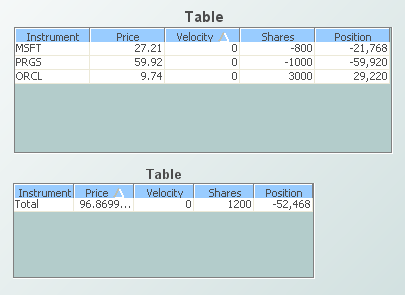Add All Rows Or Columns
Calculates the sum across cells for each row or column of the specified Table.
Usage notes
If Return Column is 1, the function returns a table with one column. The nth cell of the returned column contains the sum of the numerical cells in the nth row of the table specified by the argument Table. (If there are no numerical cells in the row, the returned cell contains 0.)
If Return Column is 0, the function returns a table with one row. The nth cell of the returned row contains the sum of the numerical cells in the nth column of the table specified by the argument Table. (If there are no numerical cells in the column, the returned cell contains N/A, by default—but see the argument Result Label Column, below.) The nth column of the returned one-row table is labeled with the label of the nth column of the table specified by the argument Table.
Arguments
This function has the following arguments:
 Table
Table: Table for which row or column sums are to be calculated.
 Return Column
Return Column: Numeric value that controls whether to return a column or a row of result values. To get a column of result values, one value for each row, set
Return Column to
1. To get a row of result values, one value for each column, set
Return Column to
0.
 Result Label
Result Label: Text string that specifies a label for the result row or column. If not specified, the label text is
Total. If
Return Column is
0, the label appears only if
Result Label Column is set to a column of
Table that has no numeric values. If
Return Column is
1, the label text always appears and
Result Label Column is ignored.
 Result Label Column
Result Label Column: Text string that specifies the column in which
Result Label appears, if
Return Column is
0. The specified column must have no numeric values in order for the label to appear. If
Return Column is
1, this argument is ignored.
This function returns a table.
Example
The second table below is attached to the function defined by the following dialog. The first table's data table is attached to the argument Table.

